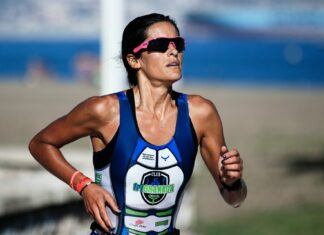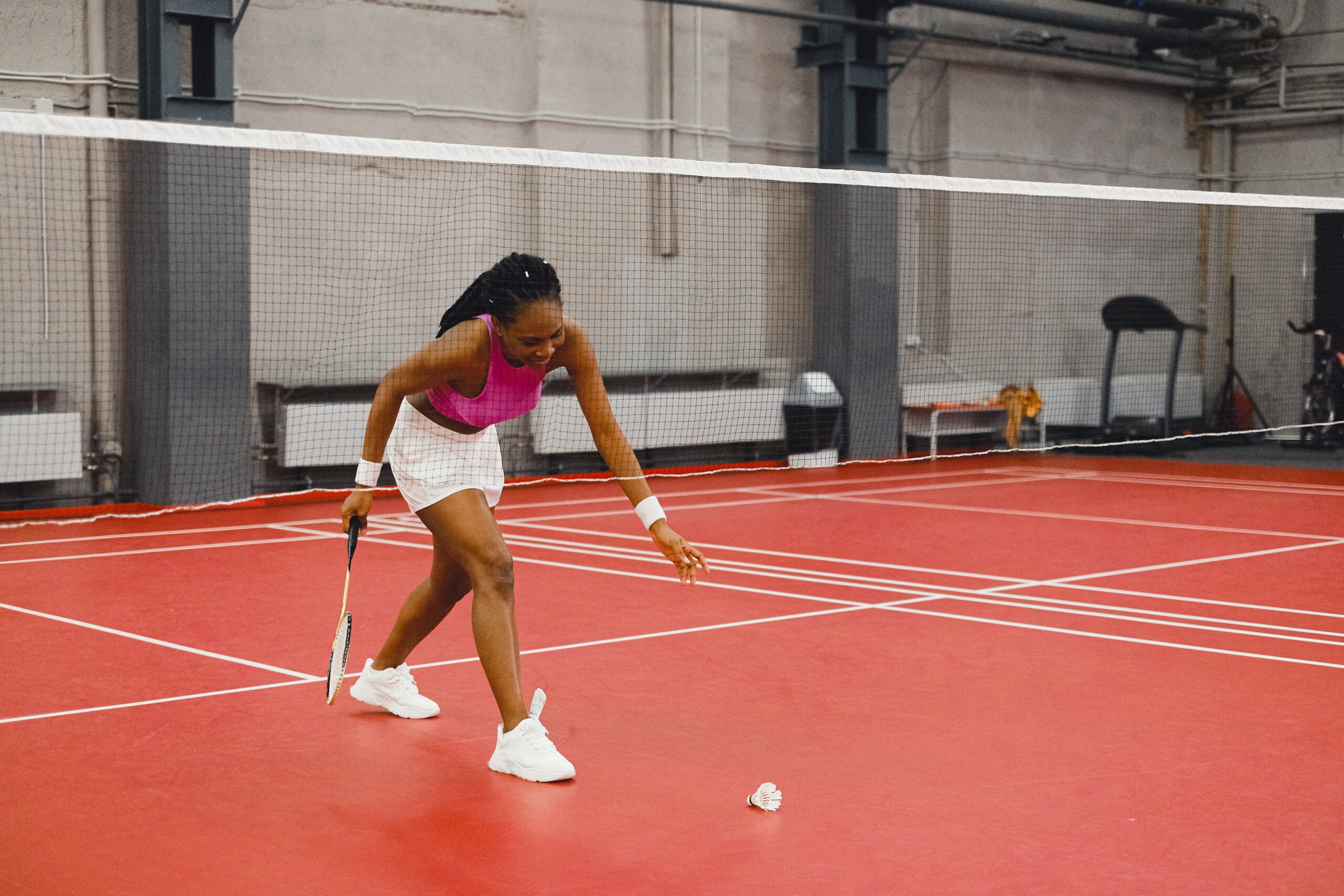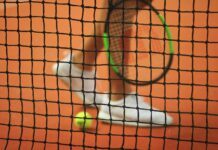Weight balance is achieved by footwork. It is the proper body posture for stroke, and all strokes must rise from it. I’m working as a right-hand player to illustrate the different strokes and footwork. Left-handed people should easily switch their feet.
The racquet grip is an extremely important aspect of the stroke, since a weak grip can spoil even the best serving. It’s an ideal grip for a powerful forehand drive. The only realistic shot for the backhand is a chop stroke, so it is intrinsically weak.
To get the forehand grip, keep the racquet with frame edge against the ground as well as the face perpendicular, the handle against the body, then “shake hands” with this as if addressing a friend. The handle fit naturally and securely into the wrist, and the line of the hand, arm, and racquet are all one. The swing aligns the racquet head well with arm, and the rest of the racquet is just a continuation of it.
Backhand Grip
The backhand grip is indeed a quarter-circle twist of the hand mostly on the handle, with the hand on the edge of the handle with the knuckles straight out. The shot is fired Through the wrist.
This is the perfect foundation for a grip. I don’t really recommend mastering this grip precisely, but rather modeling your natural grip along these lines as accurately as possible despite losing your own individuality or comfort.
After settling the racquet in the hand, the very next query is the body posture and the sequence of forming strokes.
Both tennis strokes must be executed with the body’ at right angles to a net and the elbows opposite to the ball’s flight path. The weight will still be carried away. When you strike the ball, it should move from your back foot to your front foot. Never let the weight move away from stroke. Weight specifies the “pace” of a stroke; swing specifies the “speed.”
Let me define the terms “pace” and “speed.” The actual velocity at which a ball flies via the air is referred to as “speed.” “Pace” refers to the speed at which it takes off. Pace is equivalent to weight. It is the “sting” that the ball bears as it rises off the court, shocking the novice or unaware player with intensity that the stroke did not reveal.
Most players possess both “pace” and “speed.” Any shots can contain both.
The Following Should Be The Order Of Learning Strokes:
- The Motive. Backhand and forehand This is the backbone of all tennis, so you can’t create a net attack until you have a good ground stroke. You still can’t effectively face a net attack until you can run, since that’s the only effective passing attack.
- The Service.
- The Overhead and Volley Smash.
- The Half or Chop Volley, as well as other decorative and accidental strokes.

















